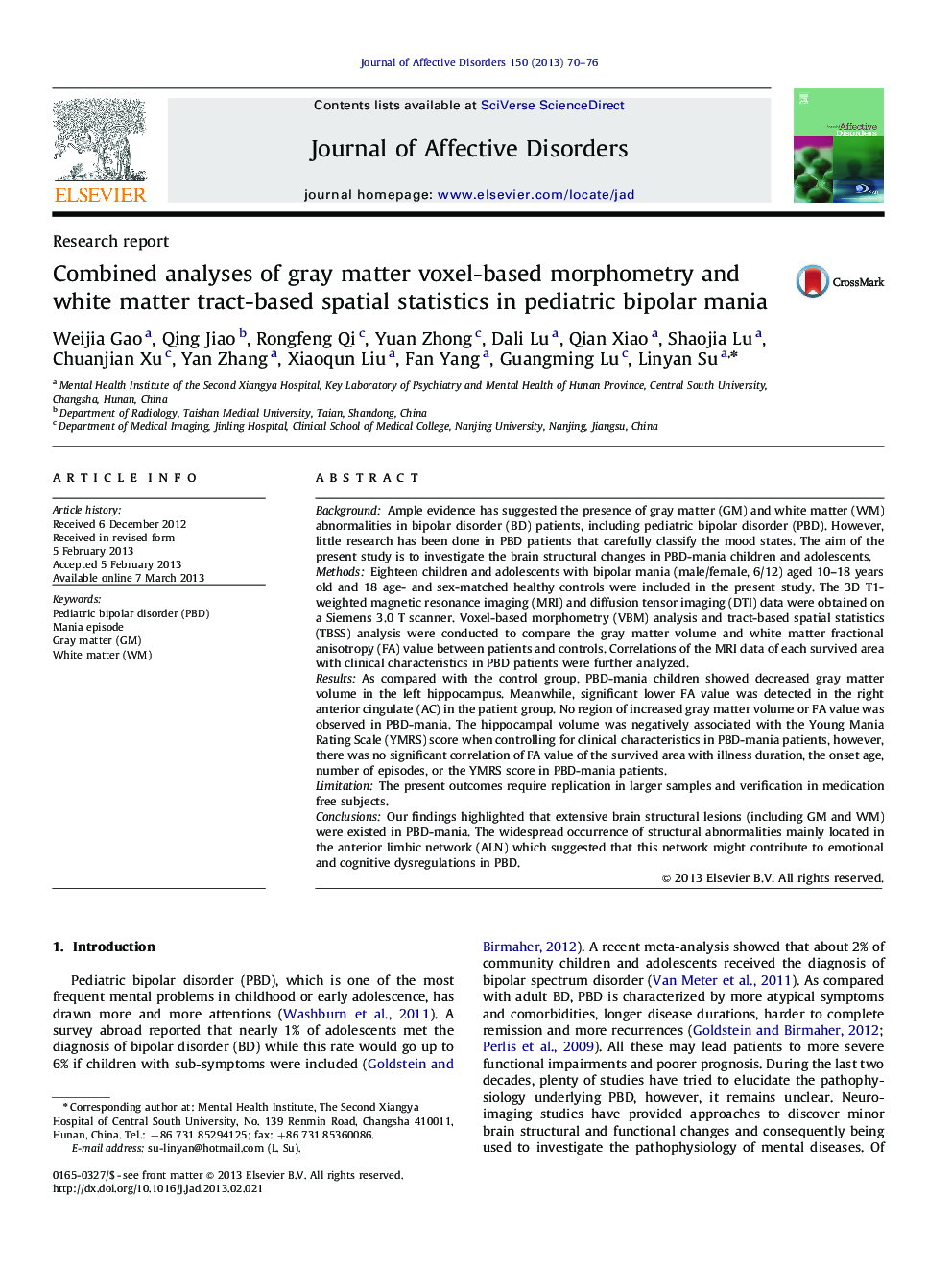| Article ID | Journal | Published Year | Pages | File Type |
|---|---|---|---|---|
| 6234144 | Journal of Affective Disorders | 2013 | 7 Pages |
BackgroundAmple evidence has suggested the presence of gray matter (GM) and white matter (WM) abnormalities in bipolar disorder (BD) patients, including pediatric bipolar disorder (PBD). However, little research has been done in PBD patients that carefully classify the mood states. The aim of the present study is to investigate the brain structural changes in PBD-mania children and adolescents.MethodsEighteen children and adolescents with bipolar mania (male/female, 6/12) aged 10-18 years old and 18 age- and sex-matched healthy controls were included in the present study. The 3D T1-weighted magnetic resonance imaging (MRI) and diffusion tensor imaging (DTI) data were obtained on a Siemens 3.0 T scanner. Voxel-based morphometry (VBM) analysis and tract-based spatial statistics (TBSS) analysis were conducted to compare the gray matter volume and white matter fractional anisotropy (FA) value between patients and controls. Correlations of the MRI data of each survived area with clinical characteristics in PBD patients were further analyzed.ResultsAs compared with the control group, PBD-mania children showed decreased gray matter volume in the left hippocampus. Meanwhile, significant lower FA value was detected in the right anterior cingulate (AC) in the patient group. No region of increased gray matter volume or FA value was observed in PBD-mania. The hippocampal volume was negatively associated with the Young Mania Rating Scale (YMRS) score when controlling for clinical characteristics in PBD-mania patients, however, there was no significant correlation of FA value of the survived area with illness duration, the onset age, number of episodes, or the YMRS score in PBD-mania patients.LimitationThe present outcomes require replication in larger samples and verification in medication free subjects.ConclusionsOur findings highlighted that extensive brain structural lesions (including GM and WM) were existed in PBD-mania. The widespread occurrence of structural abnormalities mainly located in the anterior limbic network (ALN) which suggested that this network might contribute to emotional and cognitive dysregulations in PBD.
